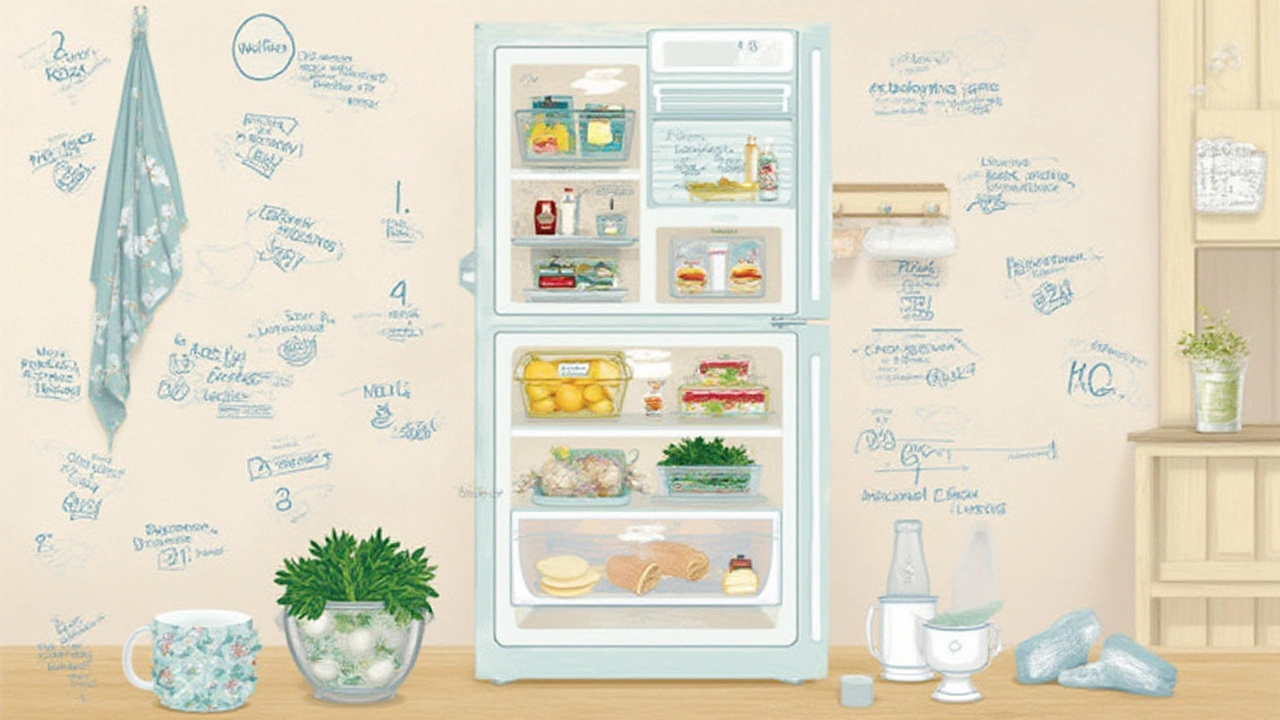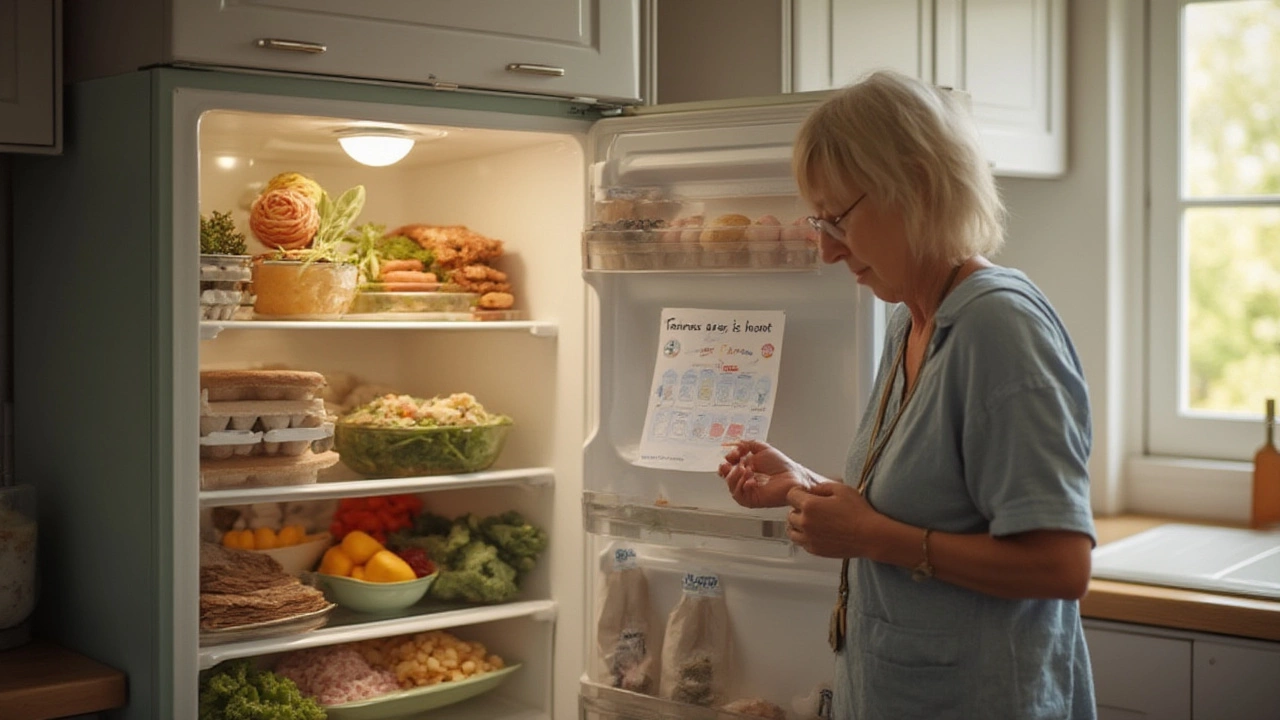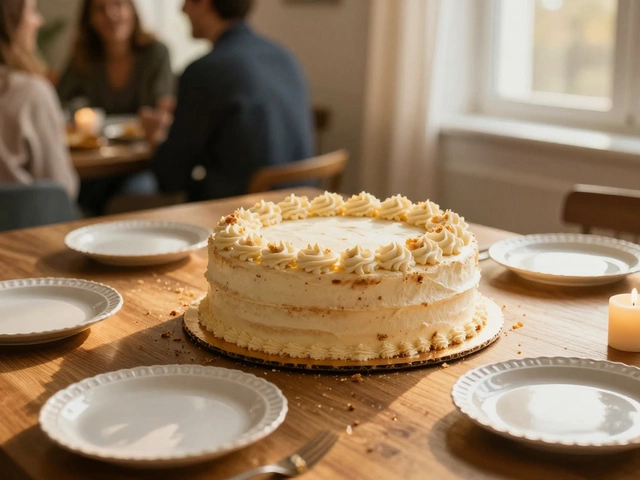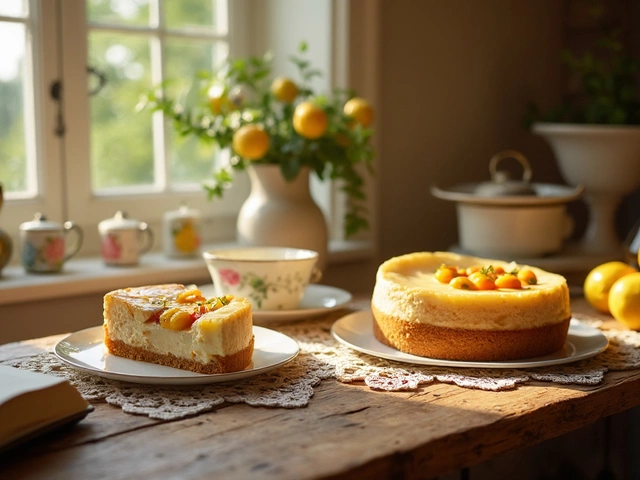Ever opened your fridge, pulled out a half-eaten casserole, and wondered, "Is this still good?" It’s not easy to remember when you cooked those chicken breasts or brought home that takeout, and somehow Tupperware containers multiply like rabbits in the back. Food waste happens everywhere, and apart from feeling guilty when tossing things, there's that looming fear of a surprise stomach ache. If you’ve ever hesitated over soggy strawberries or sniffed sour milk, you’re not alone. So how long can food actually stay in the fridge before you’re rolling the dice?
Everyday Foods: Life Spans in the Chill Zone
Let’s get straight into the good stuff. Your fridge isn’t some magical chamber that stops time, but it does slow down the bad guys—bacteria, mold, and all the other tiny culprits that ruin your lunch. But each food has its own timer.
Think about leftovers first. Cooked rice, pasta, roasted vegetables—these can chill for about three to five days. Chicken, beef, pork, and other meats follow roughly the same window after being cooked. And if you leave these foods out at room temperature longer than two hours? Chuck them. Don't risk it.
Fresh eggs last way longer than most people think. According to the USDA, raw eggs in their shells hang in there for about three to five weeks if kept cold. But once you crack them? Use them within two days. Hard-boiled eggs last for a week. Funny thing: you might notice eggs are sometimes fresher than the sell-by date lets on, but when in doubt, float test them—bad eggs float in water; good ones don’t.
Dairy is trickier. Milk is usually safe for up to seven days after opening, but yogurts and soft cheeses can push to two weeks. Block cheeses stick around for a month—or even more—if you fend off the mold. Bread, unless you’re storing it for weeks, is best kept out of the fridge since it goes stale. But put it in if you won’t eat it quickly. And let’s not forget takeout—a two-to-three-day window is your best bet unless it smells funky before then.
Fruits and veggies have personalities of their own. Berries last about a week (wash right before eating for best odds). Leafy greens, carrots, and peppers can see you through up to two weeks if kept dry in the crisper. Avocados, once ripe, cling to life for a couple days max. Cut fruit, whether it’s watermelon chunks, pineapple, or cantaloupe, is best eaten within three to five days.
Lunch meats? Sliced deli turkey or ham go bad about five days after opening. Cured meats like salami can survive two to three weeks. Seafood doesn’t fool around—cooked shrimp or fish stays safe for two or three days, but raw fish waits for no one and should be eaten within 24 hours of purchase or cooking.
Sauces and condiments outlast almost everything. Ketchup, mustard, and hot sauces can stick around for months (sometimes even up to a year) after opening, thanks to all that vinegar and salt. Mayonnaise—not so much—use it within two months, and always watch for color or smell changes.
If you’re ever questioning how long something has been sitting in the fridge, get in the habit of writing the date on masking tape as soon as you store it. It might be an extra step, but it’s worth it. My husband Leonard and I have a small whiteboard on the fridge door—jotted notes save a lot of guesswork at midnight."

Navigating the Fridge: Safety Tricks and Smart Habits
Your fridge does more than just cool your food; it organizes safety if you use it right. Start with the temperature. Keep it below 40°F (4°C). Above that, germs start their party. Most fridges come with built-in thermometers these days, but if yours doesn’t, grab one from a hardware store. It’s cheap insurance.
Don’t trust the sniff test. Many food-borne bacteria don’t change the look, smell, or taste of your favorite foods. The best defense is to set habits. For example, always put leftovers in shallow containers. They cool faster that way—bacteria struggle to spread when food drops below danger-zone temps (140°F to 40°F) quickly.
Label and rotate. Treat your fridge like a mini grocery store. Oldest food toward the front, newest in the back. This “first in, first out” system works wonders for reducing waste. I usually sort new groceries behind what’s already there, and it takes just a few seconds.
Another thing: overcrowding is the enemy. Fridge air needs space to circulate, keeping the temperature even from the cheese drawer to the top shelf. If you jam-pack every inch, cold air can’t move, and pockets of warmth pop up—perfect for bacteria. Organize shelves by the type of food: store raw meats on the bottom (where leaks can’t contaminate anything below), dairy and eggs in the middle, fruits and veggies in the crisper drawer.
Wipe up spills instantly—don’t leave sticky messes to become bacteria hotspots. Once a week, do a quick scan: open containers, check dates, toss what’s questionable. You’ll avoid mysterious science projects and keep your fridge fresher for longer.
Don’t use the refrigerator door for your milk or eggs. That’s the warmest spot in the fridge, better suited for sauces, dressings, or bottled drinks. Keep perishable items deep in the cold.
One last thing: don’t refreeze thawed food unless you’ve cooked it. Thawing and refreezing messes with texture and ups the risk of bacteria making a comeback. Frozen foods are safest if kept consistently below 0°F.

Saving Money—and Your Stomach: Myths, Mistakes, and Foolproof Storage Tips
Ever heard the myth that moldy cheese is safe if you just slice off the green part? Not always true. Soft cheeses like brie or goat cheese toss right away if you spot any fuzz; they’re just not sturdy enough to resist. Hard cheeses are tougher—cut an inch around and beneath the moldy patch and you’re good to go. Same with some cured meats, but don't risk it with bread or leftovers.
Another common pitfall is loading up “family size” portions into deep bowls or pans, then popping them directly into the fridge. Those thick piles cool too slowly in the center, creating a sneaky breeding ground for bacteria long before you notice spots or smells. Always split big batches into smaller sections, spread them out, use wide, shallow containers, or even zip-top bags to speed cooling.
Marinating raw meats or fish? Keep them covered and on the bottom shelf, away from any produce or ready-to-eat items to limit contamination risks. And never reuse marinade unless you boil it first.
The expiration date game can be confusing. “Best by,” “Sell by,” and “Use by”—these aren’t the same. “Best by” is about peak quality, not safety. “Sell by” only tells the store how long to display the item. “Use by” is the manufacturer’s best guess for safety. When in doubt, follow USDA guidelines or check a reputable chart. A quick search gets you lists from sources like the Cleveland Clinic or CDC, so you know you’re not missing anything. If you see bulging packages, frothy liquids, or odd smells, don’t gamble.
You’ll save money by knowing what goes bad fastest. Studies show the average family throws away about $1,500 a year in spoiled food. If you meal plan with storage times in mind, you can curb that. I keep a running list on the fridge of what needs eating soon, and it’s saved us from plenty of “should’ve just ordered pizza” nights.
Last tip: when in doubt, throw it out. Food poisoning is a price nobody wants to pay, especially for a half-leftover plate of pasta. Trust what the experts say instead of risking a bout of regret.
Fridges don’t come with built-in warning buzzers (yet), so it’s up to us to use a little science, some common sense, and a few sticky notes. If you treat your fridge like the food-safety tool it is, you’ll end up with fewer gross surprises, save more money, and, most importantly, eat with peace of mind.





